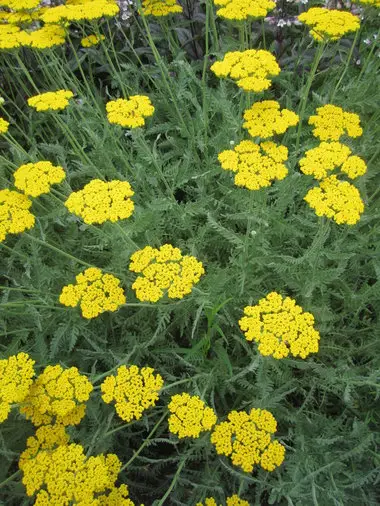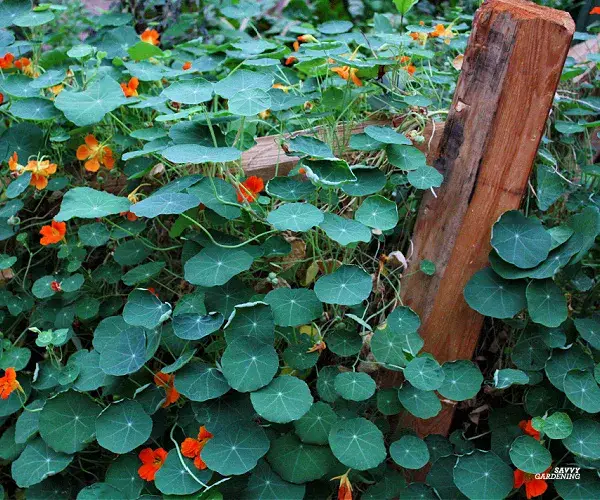We already know Horehounds are great for making home remedies for colds.
But what about Horehound as companion plants?
Horehounds are a great choice for companion plants. It aids in pollination and increases the harvest of vegetables like tomatoes, potatoes, and peppers. It also works as a natural insect repeller and attracts beneficial insects like Braconid and Icheumonid wasps, and Tachnid and Syrid flies. Other than that, Horehounds has numerous medical benefits.
In this article, we will explore the benefits and the negatives of Horehounds as companion plants.
What Are The Horehound Companion Plants?
The flowers of Horehounds are soothing to the eye and have other uses than increasing the beauty of your garden. For example, you can use them as a companion plant for your vegetables and herbs.

Let’s see what vegetables go with the Horehound plants-
- Tomato: Horehounds benefit tomato plants by attracting necessary insects that help in pollination. Also, it works as a ground cover.
By the way, did you know, if your tomatoes have a pointy end, it doesn’t necessarily mean a defect?
- Potato: Prevents the growth of weeds.
- Pepper: Improves the harvest of peppers.
But how do these plants benefit from Horehound?
- Stimulates and aids fruiting in tomatoes and peppers.
- Attracts beneficial insects such as Braconid and Icheumonid wasps, and Tachnid and Syrid flies, which help control insect pests.
- Provides habitat for larva forms of beneficial insects that parasitize or consume other insect pests.
- Natural grasshopper repellent, deterring these pests from damaging crops.
- Serves as an excellent ground cover for poor soil areas with hot and sunny growing conditions.
Apart from this, Horehound is a low-maintenance plant that thrives in challenging conditions. It can even endure the harshest of winters. Horehound is also resistant to drought, like firestick plants, making them an ideal choice.
Additionally, the plant’s captivating beauty goes beyond its practical benefits. Horehound’s leaves have a velvety texture and graceful silver edges, enhancing the visual appeal of your garden.
Other Benefits Of Horehound
Horehound can be a good choice to use as a companion plant and to enhance the beauty of the garden. But Horehounds have many medical benefits, such as-
- Digestive Aid: White horehound can help alleviate various digestion problems, such as loss of appetite, indigestion, bloating, gas, diarrhea, and constipation. Its natural properties promote healthy digestion and support the functioning of the liver and gallbladder.
- Respiratory Support: Herbal remedy made from Horehound is highly regarded for its positive effects on lung and breathing problems. It can assist in managing coughs, including whooping cough, and provide relief for respiratory conditions like asthma, tuberculosis, bronchitis, and swollen breathing passages.
- Menstrual Discomfort: Women can find relief from painful menstrual periods by using white horehound. Its therapeutic properties can help alleviate the associated discomfort and provide a soothing effect.
- Detoxification: White horehound has been traditionally used to address conditions such as yellowed skin (jaundice). It aids in the elimination of toxins from the body, promoting overall detoxification and supporting liver function.
- Anti-Parasitic: This herbal remedy possesses properties that can help eliminate parasitic worms, offering a natural approach to addressing such infestations.
- Diaphoretic and Diuretic Effects: White horehound has diaphoretic properties, which means it can induce sweating. This effect can be beneficial during fevers and can help the body eliminate toxins through the skin. Additionally, it acts as a diuretic, promoting increased urine production and assisting in the elimination of waste products from the body.
- Topical Application: White horehound can be applied topically to address skin damage, ulcers, and wounds. Its extracts possess properties that can promote healing and support the recovery of damaged skin tissue.
- Culinary Use: In the manufacturing industry, extracts of white horehound are utilized as natural flavorings in various foods and beverages. Moreover, they are commonly employed as expectorants in cough syrups and lozenges, aiding in the expulsion of phlegm.
What Are The Negative Effects Of Horehound?
Although Horehound is a great plant to have in your garden, there are some side effects of using it.
- Vomiting: Taking very large amounts of white horehound orally can lead to vomiting, which can be unpleasant and uncomfortable.
- Can Induce Stomach Acid: The use of medicinal Horehound can induce the production of stomach acid. So, people with gastric, ulcers and GERD should use it with caution.
- Skin Reactions: Applying white horehound directly to the skin can potentially cause skin reactions, although more research is needed to understand the extent and specific nature of these reactions.
- Avoid during Pregnancy: White horehound is considered likely unsafe for use during pregnancy. It has the potential to stimulate menstruation and may increase the risk of miscarriage.
Companion Plants Similar To Horehounds
Although there are many benefits, Horehounds may not be to your liking. That’s fine, there are other companion plants that are similar to Horehounds.
Yarrow:
Yarrow is an excellent companion plant that is similar to Horehounds. Like Horehounds, it attracts beneficial insects like pollinating bees, hoverflies, ladybugs, and parasitic wasps. The clustered heads of its small flowers, serve as a valuable nectar source for these beneficial insects.

It also contributes to the natural control of aphids and other small sap-sucking pests. That’s why it’s great for plants like brassicas, tomatoes, melons, aubergines, beans, and spinach. Additionally, aromatic herbs like lavender, basil, rosemary, thyme, and oregano also benefit from the presence of Yarrow.
Chamomile:

Chamomile has anti-fungal properties that make it effective in preventing fungal diseases in the garden. Just like Horehounds, chamomile attracts pollinators, ensuring enhanced pollination and higher yields for neighboring plants.
Chamomile also attracts beneficial insects, such as ladybirds and wasps, which prey on garden pests. Moreover, chamomile has the ability to draw nutrients toward the base of nearby plants, promoting their overall growth and vitality.
It pairs well with brassicas such as kale, broccoli, and cauliflower, as well as nightshade family members like tomatoes and potatoes. Flowers such as zinnias, petunias, snapdragons, phlox, delphiniums, and bleeding hearts will also work well together with Chamomile.
Nasturtiums:
Like the other companion plants, Nasturtiums also have the ability to repel a variety of insect pests. Nasturtiums attract beneficial pollinators like bees, hummingbirds, parasitic wasps, and ladybugs that aid in pollination.
Nasturtiums also release specific chemicals that stimulate faster growth and enhance the taste of neighboring plants. Planting nasturtiums near broccoli, cabbages, tomatoes, potatoes, cauliflower, and cucumbers can help them yield more. So, if your cucumber plant doesn’t have male flowers, you can plant a nasturtium to help it.

Like Horehounds, Nasturtiums provide ground cover, spreading low across the soil and helping to maintain a moist environment.
Frequently Asked Questions (FAQs):
Is Horehound a perennial?
Yes, the horehound (Marrubium vulgare) is a perennial plant. That means the horehound will come back year after year. Its ability to withstand drought conditions makes it a hardy and low-maintenance choice for gardeners.
Is Horehound invasive?
Yes, horehound can be invasive in the garden, similar to other plants in the mint family. When planted in the garden, horehound can quickly spread and become difficult to control. To prevent this, it is recommended to grow the horehound in containers or to regularly prune it back.
How long does it take for a horehound to grow?
Horehound typically takes 14-21 days to germinate from seeds. Although it can sometimes take longer due to its slow germination process. It is recommended to start horehound seeds indoors about 4-6 weeks before the last frost.
Conclusion
Horehound companion plants are great and add great value to your garden. Apart from companion plants, they have medicinal and herbal uses. To top it off, they also have aesthetic values.
But with all these benefits, Horehounds can be invasive. So, without proper maintenance, it may take over your garden.
- Why Are There Still No Tomatoes in My Tomato Plants? Let’s Fix the Issue! - July 13, 2023
- Water Propagation White Stuff on Roots: Everything You Should Know! - July 11, 2023
- String of Dolphins Drying Up: Solved! - July 11, 2023
